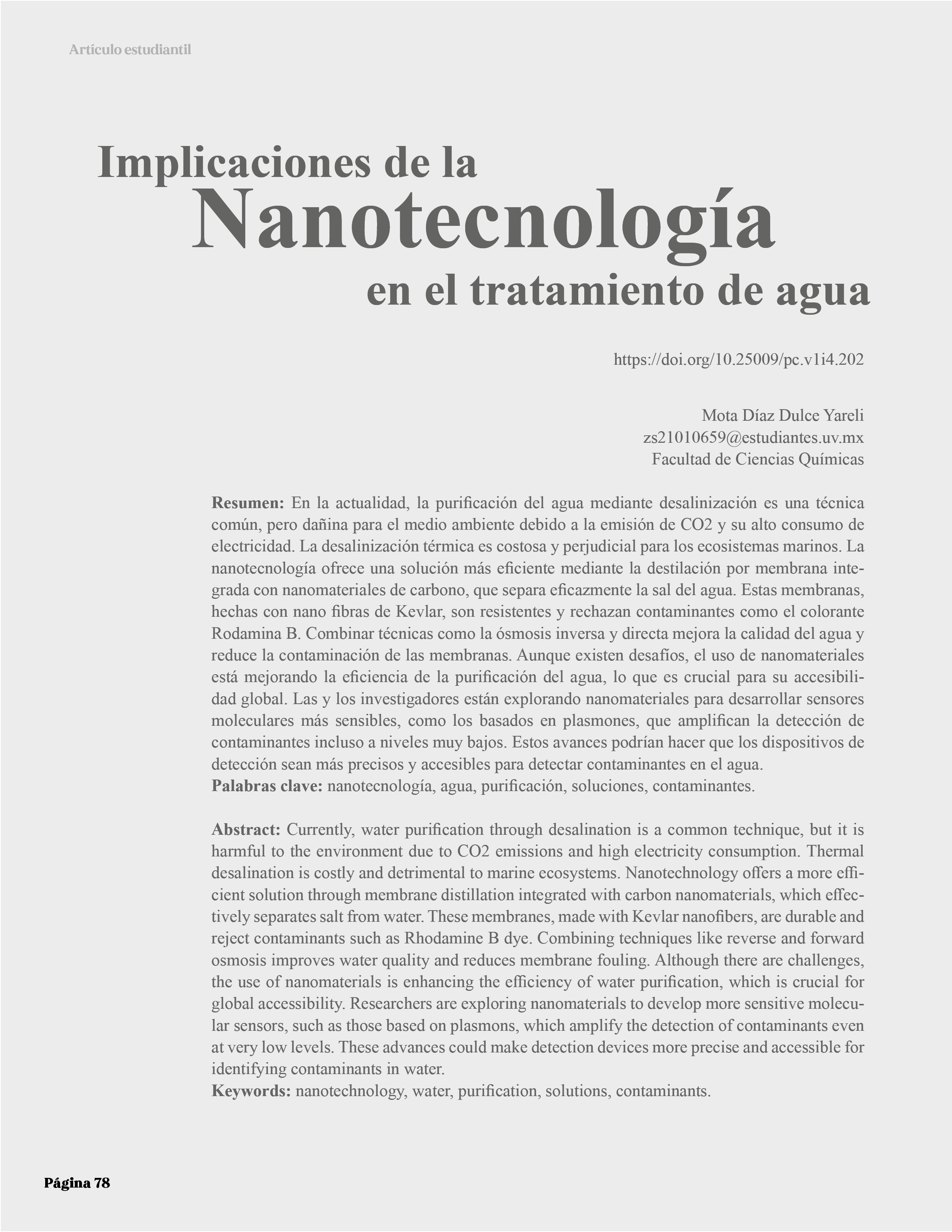Abstract
Currently, water purification through desalination is a common technique, but it is harmful to the environment due to CO2 emissions and high electricity consumption. Thermal desalination is costly and detrimental to marine ecosystems. Nanotechnology offers a more efficient solution through membrane distillation integrated with carbon nanomaterials, which effectively separates salt from water. These membranes, made with Kevlar nanofibers, are durable and reject contaminants such as Rhodamine B dye. Combining techniques like reverse and forward osmosis improves water quality and reduces membrane fouling. Although there are challenges, the use of nanomaterials is enhancing the efficiency of water purification, which is crucial for global accessibility. Researchers are exploring nanomaterials to develop more sensitive molecular sensors, such as those based on plasmons, which amplify the detection of contaminants even at very low levels. These advances could make detection devices more precise and accessible for identifying contaminants in water.

This work is licensed under a Creative Commons Attribution 4.0 International License.
Copyright (c) 2024 Pregones de Ciencia

